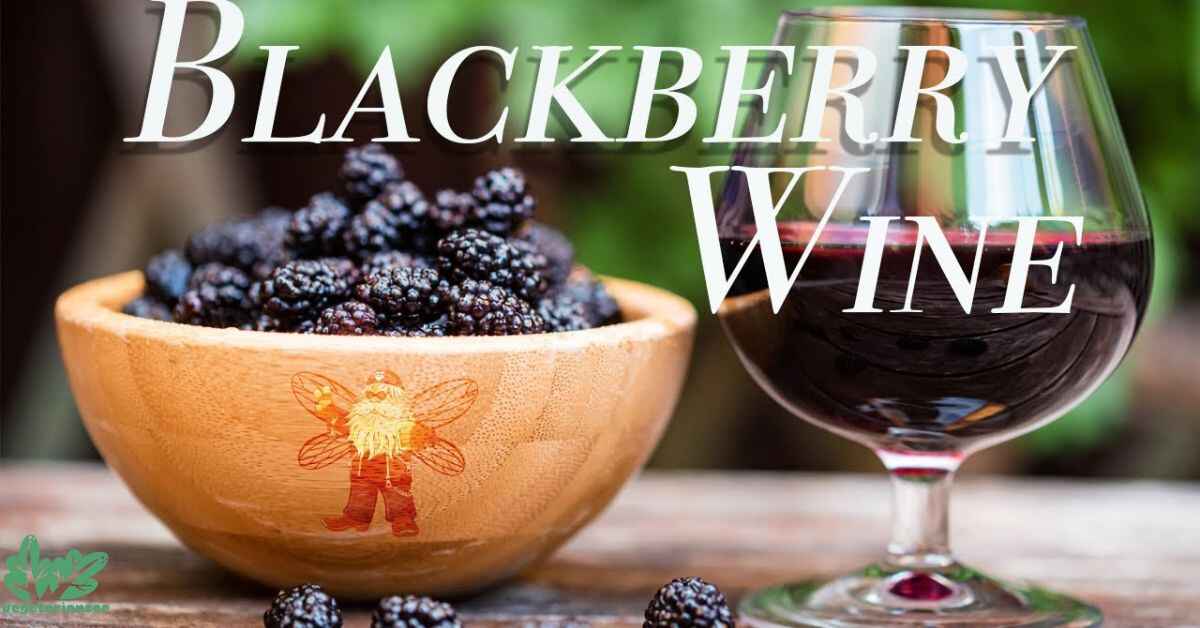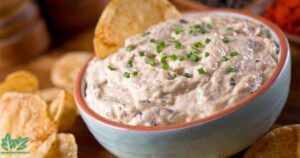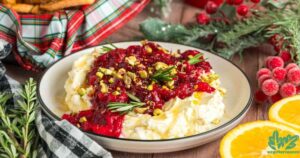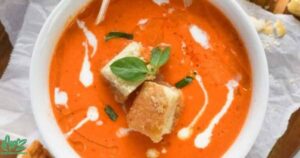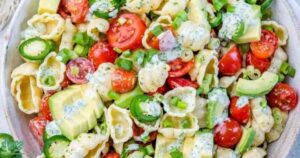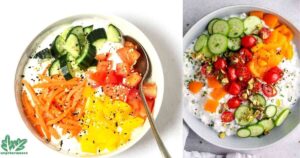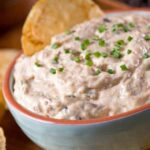The art of crafting blackberry mead remains a mystery to many home brewers. First-time mead makers often struggle with inconsistent fermentation, unclear instructions, and disappointing results that waste precious time and ingredients.
Traditional recipes can be overwhelming, filled with complex terminology and conflicting advice about temperatures, timing, and techniques. This comprehensive guide breaks down the blackberry mead-making process into clear, actionable steps.
Using proven methods refined through years of brewing experience, you’ll learn how to create a perfectly balanced, flavorful mead that captures summer’s sweetness in every bottle. Follow these straightforward instructions to craft your own batch of this ancient honey wine.
Ingredients Deep Dive
Making exceptional blackberry mead recipe starts with selecting the right ingredients. The quality of your raw materials directly impacts your final product. Pure, raw honey creates complex flavors that store-bought honey can’t match.
Fresh blackberries bring natural sweetness and deep color. The right yeast strain ensures proper fermentation. Understanding these core ingredients helps you make informed choices for your brew.
Honey Selection
Raw, unfiltered honey forms the foundation of your blackberry mead recipe. Choose a light-flavored variety like clover or wildflower honey. These allow the blackberry flavors to shine through. You’ll need 2-3 pounds of honey per gallon of mead.
Local honey often provides the best results. Avoid pasteurized or heavily processed honey, as these lack the natural nutrients that help fermentation.
Blackberry Preparation
Fresh summer blackberries create the richest flavor in your blackberry mead recipe. Pick or purchase ripe, firm berries without mold. You need 1-2 pounds per gallon.
Freeze the berries first – this breaks down cell walls and releases more juice. Thaw completely before using. Remove any stems or leaves. Gently crush the berries to release their juices. Strain out seeds if desired, though many brewers leave them in during primary fermentation.
Yeast Selection
The right yeast determines your blackberry mead recipe’s final character. Wine yeasts like Lalvin D-47 or EC-1118 work best. These strains handle high alcohol levels and preserve fruit flavors. One packet serves a 1-5 gallon batch. Store yeast in the refrigerator until use.
Consider your desired sweetness level – some yeasts create a drier mead while others leave residual sweetness. Champagne yeast produces very dry mead with higher alcohol content.
Step-by-Step Recipe
Initial Preparation
Start your blackberry mead recipe by sanitizing all equipment thoroughly. Use brewing sanitizer or diluted bleach solution (1 tablespoon per gallon). Rinse everything well.
Heat water to dissolve honey – aim for 100-110°F. Too hot will destroy honey’s subtle flavors. Mix honey and water until fully combined. Add crushed blackberries to your fermenting vessel. Pour in the honey-water mixture. Let cool to room temperature before adding yeast.
Primary Fermentation
Active fermentation begins your blackberry mead recipe journey. Keep fermentation temperature between 65-75°F. The mixture will bubble vigorously for 7-14 days. Stir daily with a sanitized spoon to prevent mold growth.
The color deepens as berries release their pigments. A sweet, fruity smell fills the air. After two weeks, bubbling slows significantly. Time to move to secondary fermentation.
Secondary Fermentation
Transfer your blackberry mead recipe carefully to a clean carboy. Leave sediment behind. The liquid should be clearer but still cloudy. Add airlock and store in a dark place at 65-70°F. Let age for 1-3 months.
The mead clarifies naturally during this time. Flavors mature and deepen. Check airlock weekly to ensure it stays filled. Avoid moving the container to prevent stirring up sediment.
Bottling Process
Your blackberry mead recipe reaches its final stage. Sanitize bottles and equipment. Siphon mead carefully to avoid disturbing sediment. Fill bottles leaving 1-inch headspace. Use flip-top bottles or cork with new corks.
Label with date and details. Store bottles upright for one week, then lay on their sides. Age for at least 3 months before drinking. Many prefer waiting 6-12 months for optimal flavor development.
Ingredients Deep Dive
Making exceptional blackberry mead recipe starts with selecting the right ingredients. The quality of your raw materials directly impacts your final product. Pure, raw honey creates complex flavors that store-bought honey can’t match.
Fresh blackberries bring natural sweetness and deep color. The right yeast strain ensures proper fermentation. Understanding these core ingredients helps you make informed choices for your brew.
Honey Selection
Raw, unfiltered honey forms the foundation of your blackberry mead recipe. Choose a light-flavored variety like clover or wildflower honey. These allow the blackberry flavors to shine through. You’ll need 2-3 pounds of honey per gallon of mead.
Local honey often provides the best results. Avoid pasteurized or heavily processed honey, as these lack the natural nutrients that help fermentation.
Blackberry Preparation
Fresh summer blackberries create the richest flavor in your blackberry mead recipe. Pick or purchase ripe, firm berries without mold. You need 1-2 pounds per gallon. Freeze the berries first – this breaks down cell walls and releases more juice.
Thaw completely before using. Remove any stems or leaves. Gently crush the berries to release their juices. Strain out seeds if desired, though many brewers leave them in during primary fermentation.
Yeast Selection
The right yeast determines your blackberry mead recipe’s final character. Wine yeasts like Lalvin D-47 or EC-1118 work best. These strains handle high alcohol levels and preserve fruit flavors.
One packet serves a 1-5 gallon batch. Store yeast in the refrigerator until use. Consider your desired sweetness level – some yeasts create a drier mead while others leave residual sweetness. Champagne yeast produces very dry mead with higher alcohol content.
Step-by-Step Recipe
Initial Preparation
Start your blackberry mead recipe by sanitizing all equipment thoroughly. Use brewing sanitizer or diluted bleach solution (1 tablespoon per gallon). Rinse everything well.
Heat water to dissolve honey – aim for 100-110°F. Too hot will destroy honey’s subtle flavors. Mix honey and water until fully combined. Add crushed blackberries to your fermenting vessel. Pour in the honey-water mixture. Let cool to room temperature before adding yeast.
Primary Fermentation
Active fermentation begins your blackberry mead recipe journey. Keep fermentation temperature between 65-75°F. The mixture will bubble vigorously for 7-14 days. Stir daily with a sanitized spoon to prevent mold growth.
The color deepens as berries release their pigments. A sweet, fruity smell fills the air. After two weeks, bubbling slows significantly. Time to move to secondary fermentation.
Secondary Fermentation
Transfer your blackberry mead recipe carefully to a clean carboy. Leave sediment behind. The liquid should be clearer but still cloudy. Add airlock and store in a dark place at 65-70°F.
Let age for 1-3 months. The mead clarifies naturally during this time. Flavors mature and deepen. Check airlock weekly to ensure it stays filled. Avoid moving the container to prevent stirring up sediment.
Bottling Process
Your blackberry mead recipe reaches its final stage. Sanitize bottles and equipment. Siphon mead carefully to avoid disturbing sediment. Fill bottles leaving 1-inch headspace. Use flip-top bottles or cork with new corks.
Label with date and details. Store bottles upright for one week, then lay on their sides. Age for at least 3 months before drinking. Many prefer waiting 6-12 months for optimal flavor development.
Read This Blog: How to Cook a Beef Brisket? The Ultimate Guide
Recipe Variations
The classic blackberry mead recipe welcomes creative adaptations. Simple additions can create unique flavor profiles. Many brewers combine blackberries with other summer fruits like raspberries or cherries.
Some add vanilla beans or cinnamon sticks during secondary fermentation. Others blend different honey varieties to create complex taste layers. Each variation produces distinct results while maintaining the core blackberry character.
Flavor Additions
Enhance your blackberry mead recipe with complementary ingredients. Oak chips add woody notes and smooth tannins. Vanilla beans create warmth and depth. Star anise or cloves bring spicy complexity. Rose petals add floral hints.
Add spices during secondary fermentation. Start with small amounts – you can always add more. Remove additions once desired flavor develops, usually within 1-4 weeks.
Seasonal Adaptations
Winter brewing requires adjustments to the blackberry mead recipe. Frozen berries work well when fresh aren’t available. Quality frozen berries often provide better results than off-season fresh ones.
Also Read This Blog: The Ultimate Guide: How to Cook Ramen Noodles Like a Pro
Adjust honey amounts slightly higher with frozen fruit. Consider adding more berries to compensate for potential flavor loss. Temperature control becomes crucial in varying seasons. Summer brewing may need cooling methods, while winter brewing might require warming.
Nutritional Information
A typical blackberry mead recipe yields about 150 calories per 5-ounce serving. The exact content varies with honey amount and final sweetness. Blackberries add antioxidants and vitamin C. The fermentation process creates B vitamins.
The alcohol content usually ranges from 12-14%. Natural sugars remain in sweet versions. Dry versions have fewer calories. Serve in 5-ounce portions for responsible enjoyment.
Frequently Asked Questions
What is blackberry mead called?
Blackberry mead is technically called a “melomel” – the term for any mead made with fruit. Specifically, it’s sometimes called “blackberry melomel” or “bramble mead.”
What fruit makes the best mead?
While many fruits work well, berries generally produce excellent mead. Blackberries, raspberries, and strawberries create rich, flavorful meads. Stone fruits like peaches and plums also perform well.
How do you drink blackberry mead?
Serve blackberry mead slightly chilled, around 55°F. Use wine glasses to appreciate the aroma. Drink it as an after-dinner dessert wine or pair with dark chocolate, strong cheeses, or grilled meats.
How long to ferment mead with fruit?
Primary fermentation takes 2-3 weeks. Secondary fermentation needs 1-3 months. Total aging time, including bottle conditioning, typically ranges from 6-12 months for optimal flavor development.
Conclusion
Crafting blackberry mead connects you to an ancient brewing tradition while creating something uniquely yours. This guide provides the foundation for your mead-making journey.
Start with these basics, then experiment as you gain confidence. Your patience will be rewarded with a delicious honey wine that captures summer’s essence in every glass.

Ethan Henry with 8 years of expertise in bamboo, excels in sustainable design, construction and product development. His passion for eco-friendly solutions has driven innovative advancements in bamboo-based industries.
